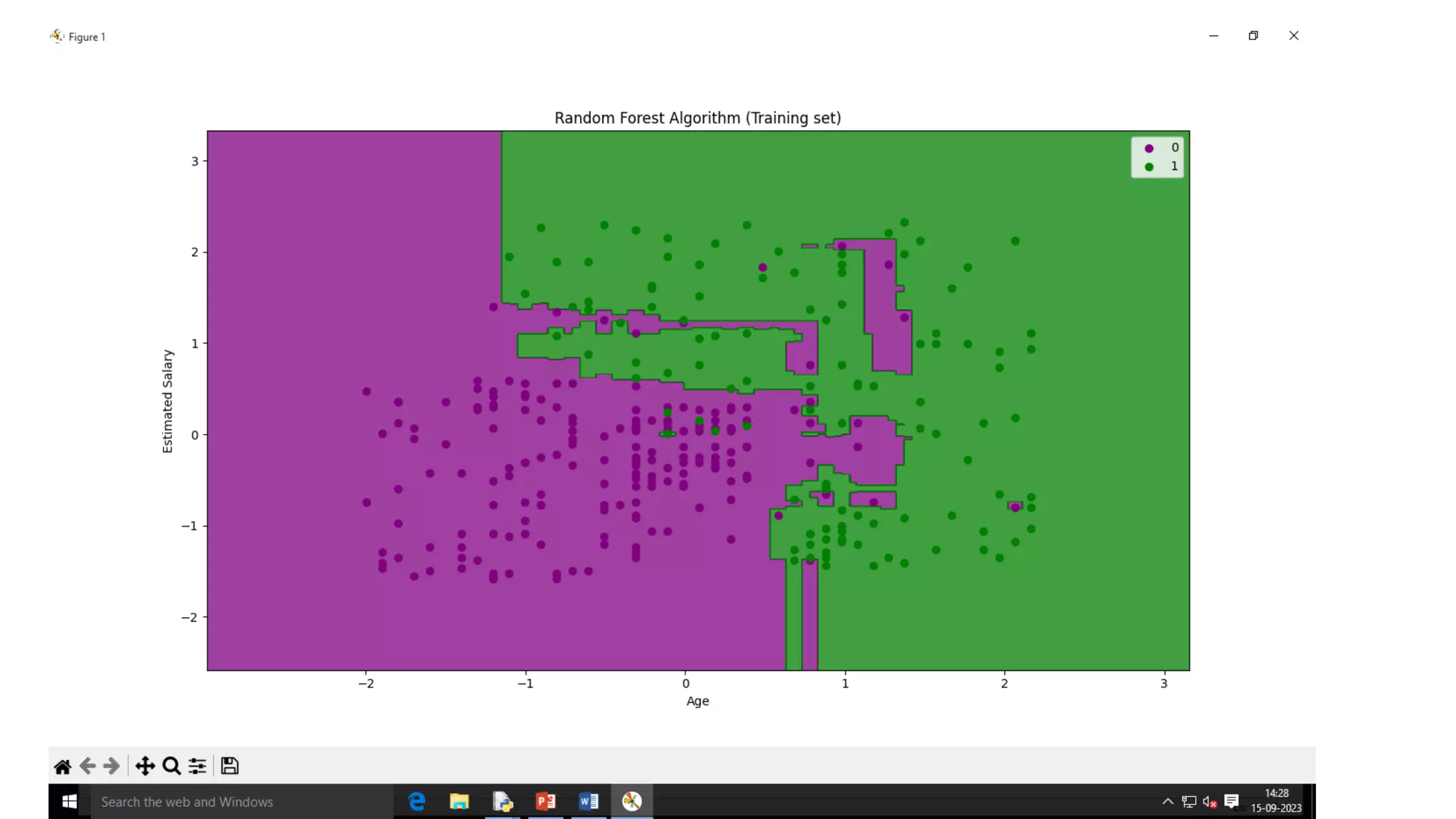Random forest is an ensemble machine learning algorithm that combines multiple decision trees to improve predictive accuracy. It works by constructing many decision trees during training and outputting the class that is the mode of the classes of the individual trees. Random forest can be used for both classification and regression problems and provides high accuracy even with large datasets.
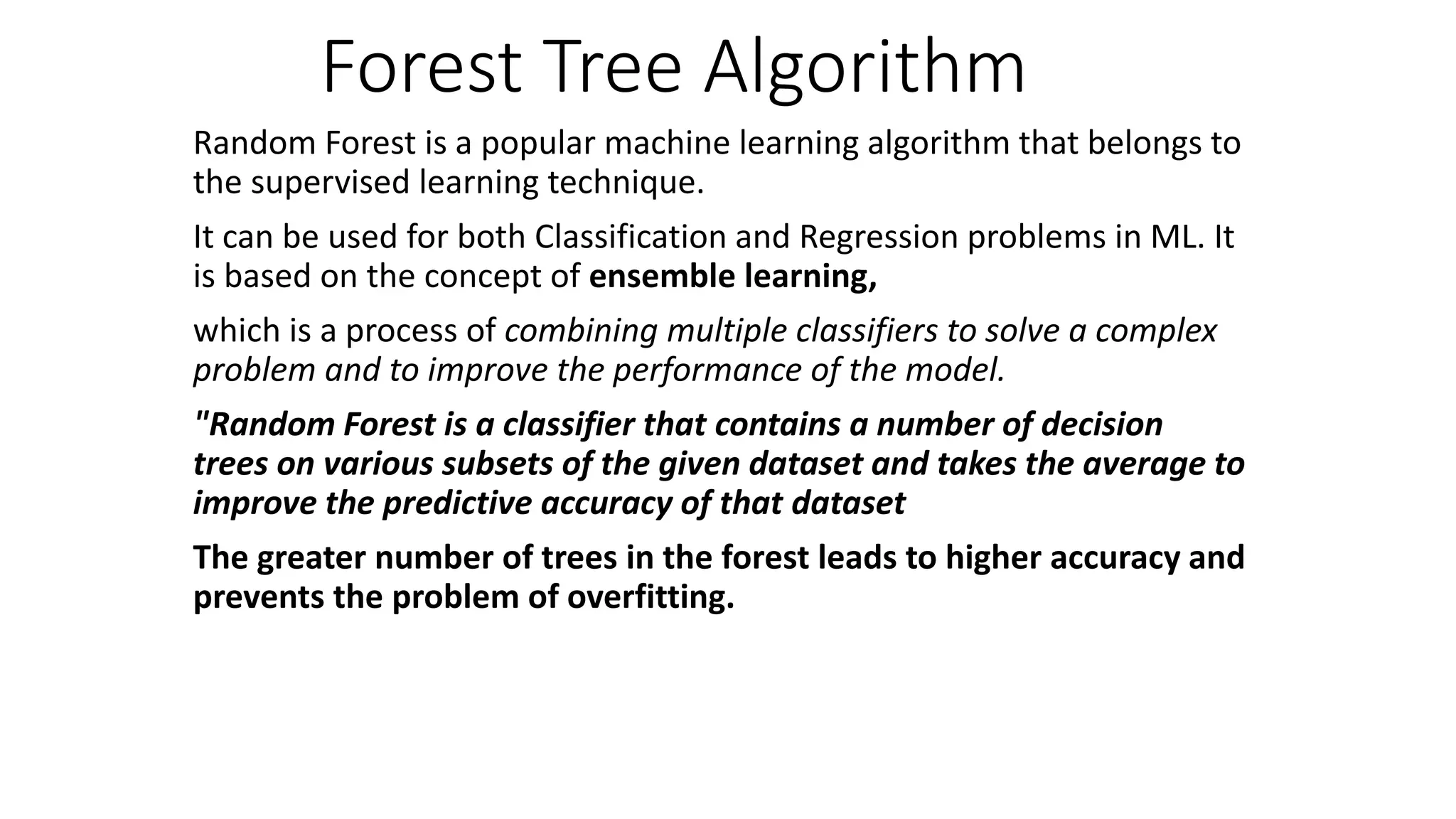
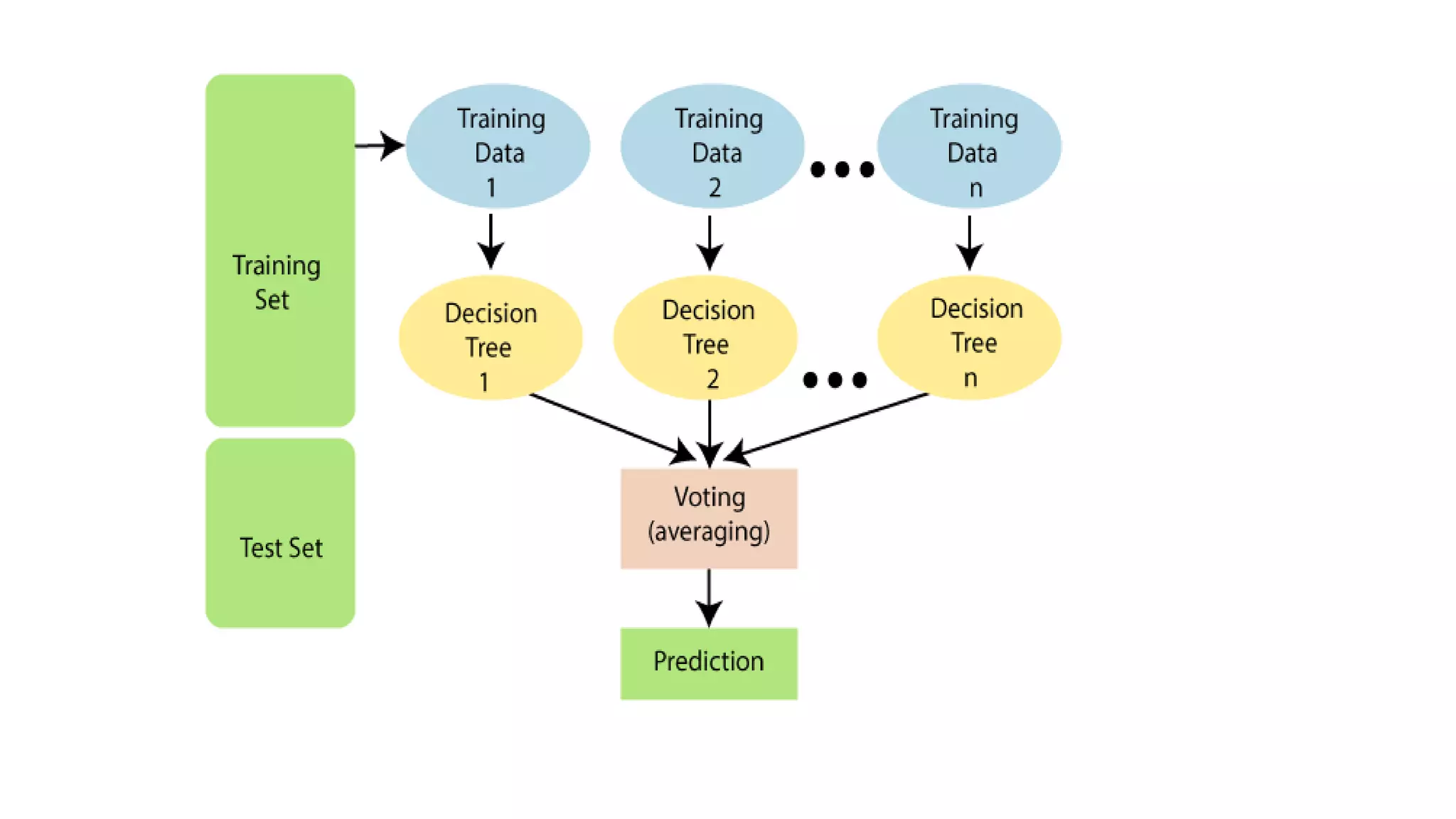
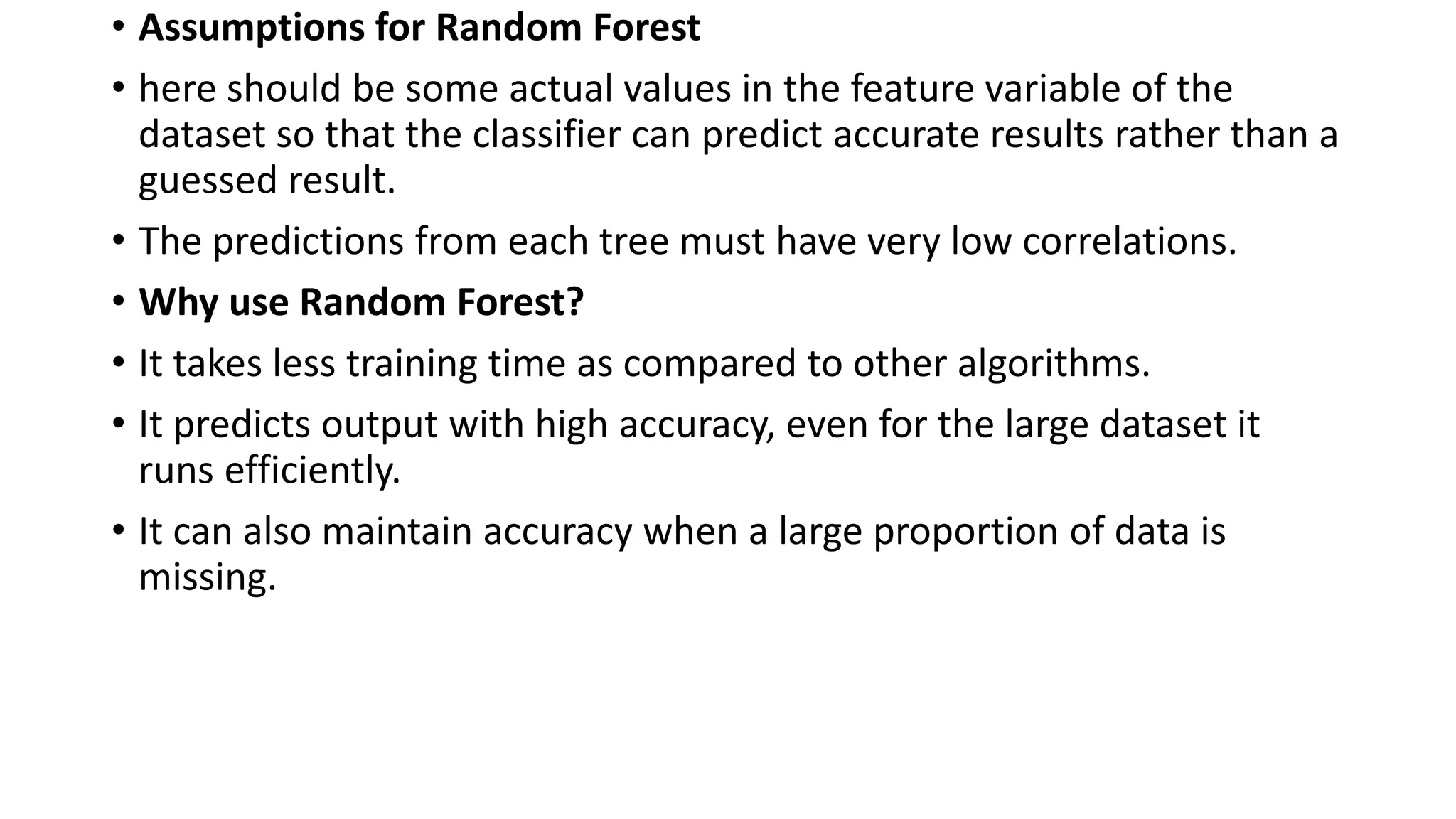


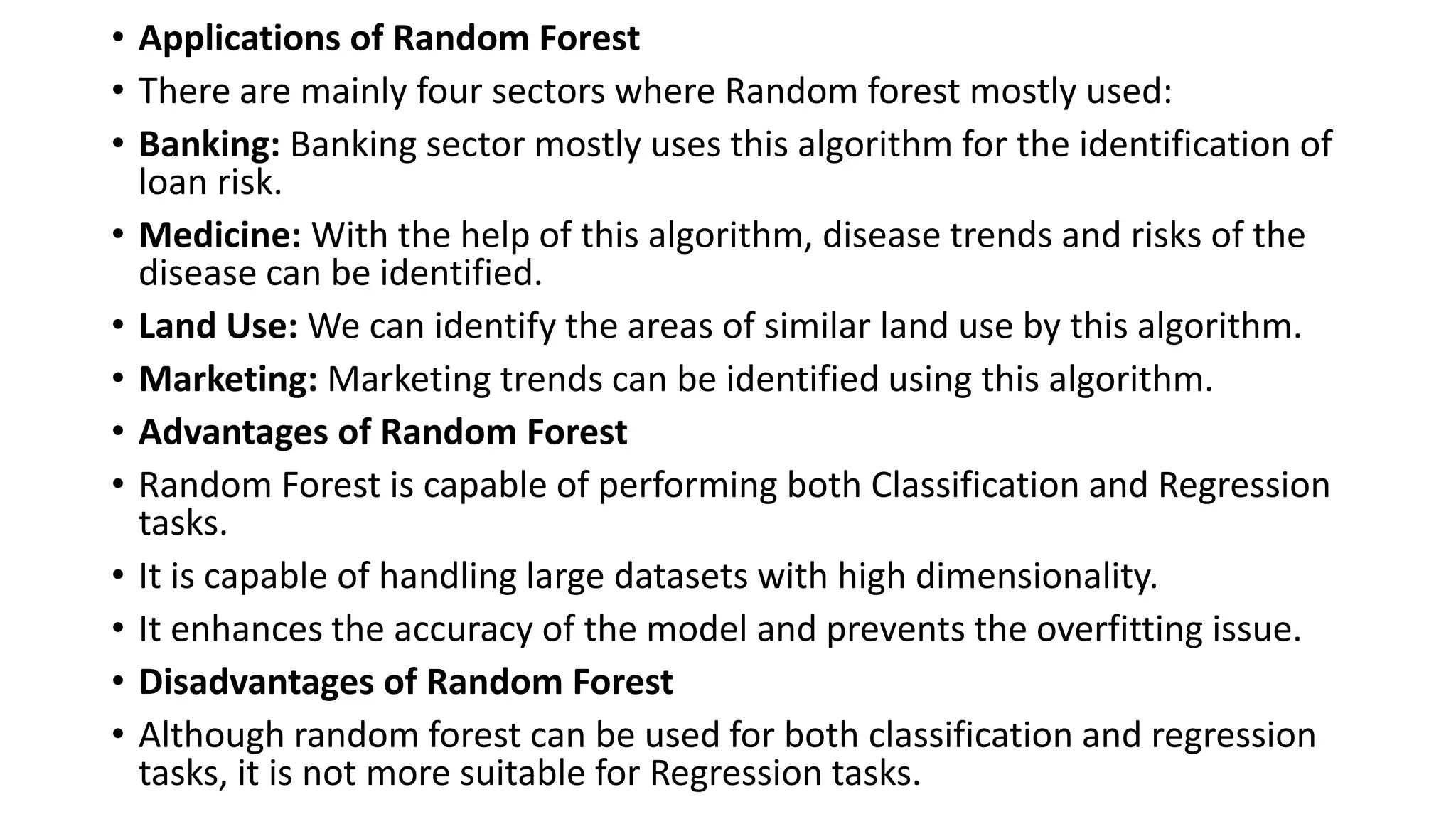
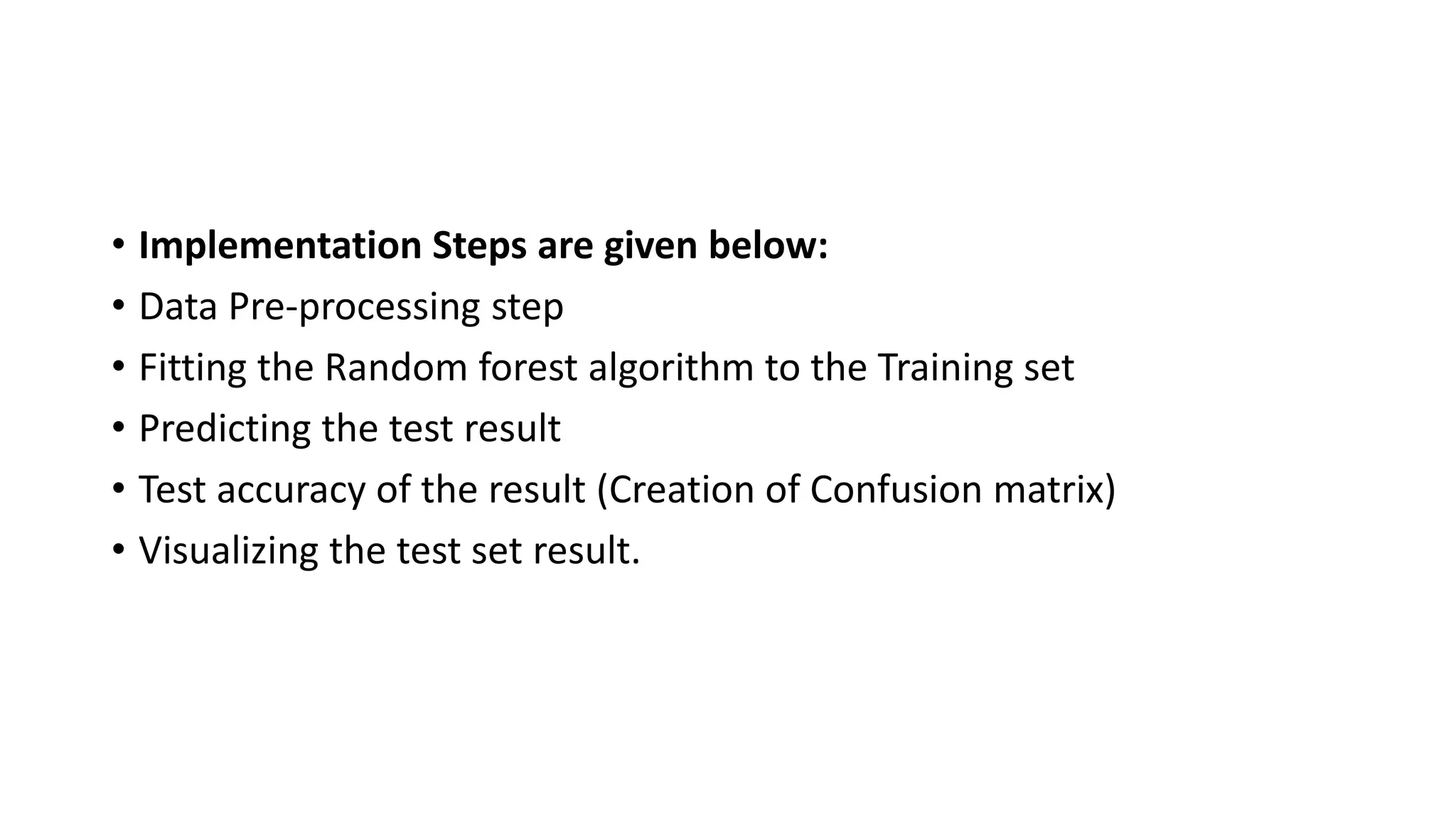
![Forest Tree Algorithm in Python
• # importing libraries
• import numpy as nm
• import matplotlib.pyplot as mtp
• import pandas as pd
•
• #importing datasets
• data_set= pd.read_csv('User_Data.csv')
•
• #Extracting Independent and dependent Variable
• x= data_set.iloc[:, [2,3]].values
• y= data_set.iloc[:, 4].values](https://image.slidesharecdn.com/randomforestdecisiontree-230915090008-9833ef13/75/Random-Forest-Decision-Tree-pptx-8-2048.jpg)
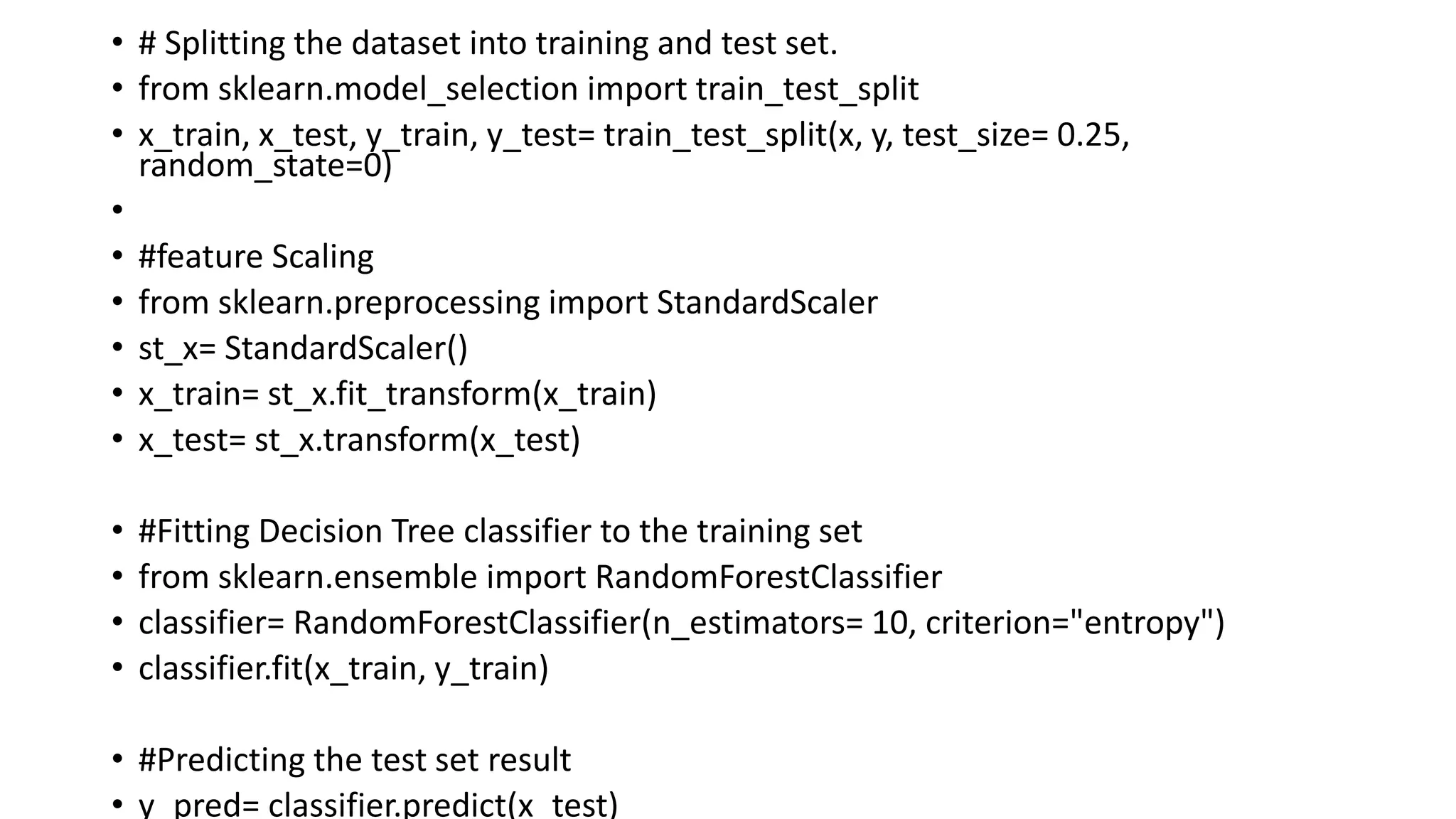
![• #Creating the Confusion matrix
• from sklearn.metrics import confusion_matrix
• cm= confusion_matrix(y_test, y_pred)
• #Visualizing the training Set result
• from matplotlib.colors import ListedColormap
• x_set, y_set = x_train, y_train
• x1, x2 = nm.meshgrid(nm.arange(start = x_set[:, 0].min() - 1, stop = x_set[:,
0].max() + 1, step =0.01),
• nm.arange(start = x_set[:, 1].min() - 1, stop = x_set[:, 1].max() + 1, step =
0.01))
• mtp.contourf(x1, x2, classifier.predict(nm.array([x1.ravel(),
x2.ravel()]).T).reshape(x1.shape),
• alpha = 0.75, cmap = ListedColormap(('purple','green' )))
• mtp.xlim(x1.min(), x1.max())
• mtp.ylim(x2.min(), x2.max())](https://image.slidesharecdn.com/randomforestdecisiontree-230915090008-9833ef13/75/Random-Forest-Decision-Tree-pptx-10-2048.jpg)
![• for i, j in enumerate(nm.unique(y_set)):
• mtp.scatter(x_set[y_set == j, 0], x_set[y_set == j, 1],
• c = ListedColormap(('purple', 'green'))(i), label = j)
• mtp.title('Random Forest Algorithm (Training set)')
• mtp.xlabel('Age')
• mtp.ylabel('Estimated Salary')
• mtp.legend()
• mtp.show()](https://image.slidesharecdn.com/randomforestdecisiontree-230915090008-9833ef13/75/Random-Forest-Decision-Tree-pptx-11-2048.jpg)
